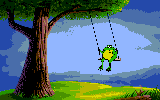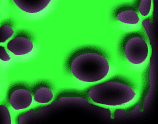|
|
|
Beaver Facts
|
|
Enter subhead content here
Beavers are built for underwater work. They are typically dark, reddish brown but varies from
a yellowish brown to almost black. They have a very distinctive, flattened, scaly tail that is also a fat storage area. Their
hind feet are webbed and clawed, and their front feet are smaller, but not webbed. Their aquatic habits are accommodated for
underwater work. Their noses and ears have valves that close when beavers submerge. The beaver's large front teethor incisorsprotrude
in front of their lips, enabling them to cut and chew submerged wood without getting water in their mouths. Their broad tail
functions as a rudders, helping beavers to maneuver large logs to their lodges and dams. Their dense underfur is grayish-brown,
and they have long, reddish brown guard hairs. There total length is 40 to 52 inches 1000-1350 mm, tail length is 10.4 to
13 inches 280-325 mm, and they weigh 22 to 75 pounds 10-35 kg.
Range:
Following local extinction because of beaver trapping during the 1800's, conservation has allowed their populations to increase.
Presently they are widely distributed through North America north of Mexico, excluding Florida, southern California, and southern
Nevada. They are common throughout much of Idaho where ever there are streams, ponds, lakes and even along rivers.
Habitat:
Beavers are dependent on slow-flowing brooks, streams, and rivers for dam construction, but they also live in small lakes
and fairly large rivers in Idaho. They prefer adjacent stands of successional growth trees such as aspen, willow and cottonwood
rather than mature forests. Beavers are highly capable of altering their own environment by damming streams and other flowing
water to create ponds. Although beavers normally submerge for 3 or 4 minutes at a time, they are quite capable of holding
their breath for 12 to 15 minutes if required. They exhale in little spurts as they swim or work under water, and a large
beaver is quite capable of traveling nearly 1/2 mile under the surface before it must surface for more air.
Diet:
They prefer to eat bark from trees such as aspen, willow, birch and even maple as well as various woody shrubs. Willow and
aspen seem to be their favorites. They also eat roots of tuberous aquatic plants, especially pond lilies which they utilize
more during the summer months. They do not eat fish or other aquatic animals, which is contrary to what many people think.
Beavers are second only to humans in their capacity to manipulate the environment? By building and maintaining dams, busy
beavers can completely change the vegetation, animal life, and other components of the watersheds in which they live. The
ponds created by the dams are the beaver's first defense against predators like the lynx and wolf.
What is sure to give them major dentist bills is that a beaver's front teeth never stop growing; beavers must gnaw, chew,
and chop nearly all the time. So by keeping up their homes, beavers wear down their teeth making them not grow too long.
Dams and Lodges
The urge to build dams comes from an instinctual reaction to the sound of running water. Beavers construct their dams from
any available materials including: wood, mud, crop residue and stones. They usually build new dams in the spring and spend
their time in the fall repairing old dams and storing food for the winter. Beavers do not live in their dams; they build
a separate lodge in the bank. They enter their lodge through tunnels that lead from underwater, up through the floor
ofthe lodge. As water in the pond rises, they expand their lodge upward into a largemound of sticks and mud. A lodge will
typically house a breeding pair of beavers and their offspring from the last two years
|
 |
 |
|
Beavers are built for underwater work. They are typically dark, reddish brown but varies from a yellowish brown
to almost black. They have a very distinctive, flattened, scaly tail that is also a fat storage area. Their hind
feet are webbed and clawed, and their front feet are smaller, but not webbed. Their aquatic habits are accommodated for
underwater work. Their noses and ears have valves that close when beavers submerge. The beaver's large front teeth—or
incisors—protrude in front of their lips, enabling them to cut and chew submerged wood without getting water in their
mouths. Their broad tail functions as a rudders, helping beavers to maneuver large logs to their lodges and dams.
Their dense underfur is grayish-brown, and they have long, reddish brown guard hairs. There total length is 40 to 52
inches (1000-1350 mm), tail length is 10.4 to 13 inches (280-325 mm), and they weigh 22 to 75 pounds (10-35 kg).
Range:
Following
local extinction because of beaver trapping during the 1800's, conservation has allowed their populations to increase. Presently
they are widely distributed through North America north of Mexico, excluding Florida, southern California, and southern Nevada.
They are common throughout much of Idaho where ever there are streams, ponds, lakes and even along rivers.
Habitat:
Beavers are dependent on slow-flowing
brooks, streams, and rivers for dam construction, but they also live in small lakes and fairly large rivers in Idaho. They
prefer adjacent stands of successional growth trees such as aspen, willow and cottonwood rather than mature forests. Beavers
are highly capable of altering their own environment by damming streams and other flowing water to create ponds. Although
beavers normally submerge for 3 or 4 minutes at a time, they are quite capable of holding their breath for 12 to 15 minutes
if required. They exhale in little spurts as they swim or work under water, and a large beaver is quite capable of traveling
nearly 1/2 mile under the surface before it must surface for more air.
Diet:
They prefer to eat bark from trees
such as aspen, willow, birch and even maple as well as various woody shrubs. Willow and aspen seem to be their favorites.
They also eat roots of tuberous aquatic plants, especially pond lilies which they utilize more during the summer months.
They do not eat fish or other aquatic animals, which is contrary to what many people think.
Beavers are second only to humans in their capacity to manipulate the environment? By building and maintaining dams, busy
beavers can completely change the vegetation, animal life, and other components of the watersheds in which they live. The
ponds created by the dams are the beaver's first defense against predators like the lynx and wolf.
What is sure to give them major dentist bills is that a beaver's front teeth never stop growing; beavers must gnaw,
chew, and chop nearly all the time. So by keeping up their homes, beavers wear down their teeth making them not grow too long.
Dams and Lodges
The urge to build dams comes from an instinctual reaction to
the sound of running water. Beavers construct their dams from any available materials including: wood, mud, crop residue
and stones. They usually build new dams in the spring and spend their time in the fall repairing old dams and storing food
for the winter. Beavers do not live in their dams; they build a separate lodge in the bank. They enter their
lodge through tunnels that lead from underwater, up through the floor ofthe lodge. As water in the
pond rises, they expand their lodge upward into a largemound of sticks and mud. A lodge will typically house
a breeding pair of beavers and their offspring from the last two years

|
 |
|
|
 |
|
|
 |
|
|
 |

|
 |
|
Enter supporting content here
|
|

